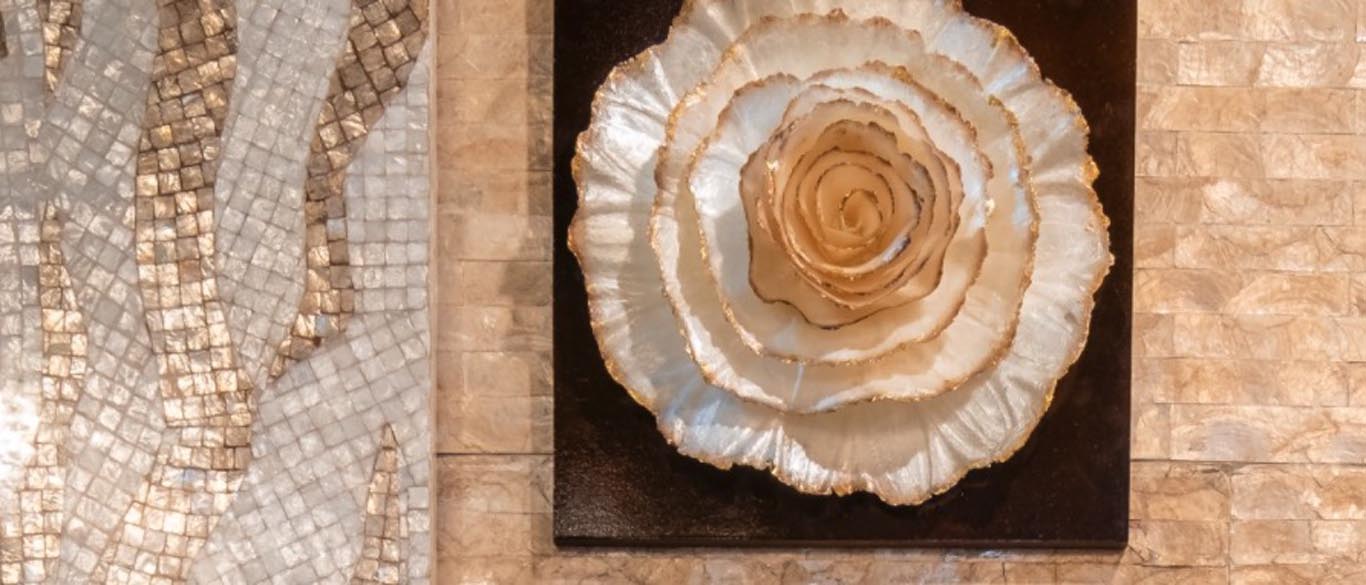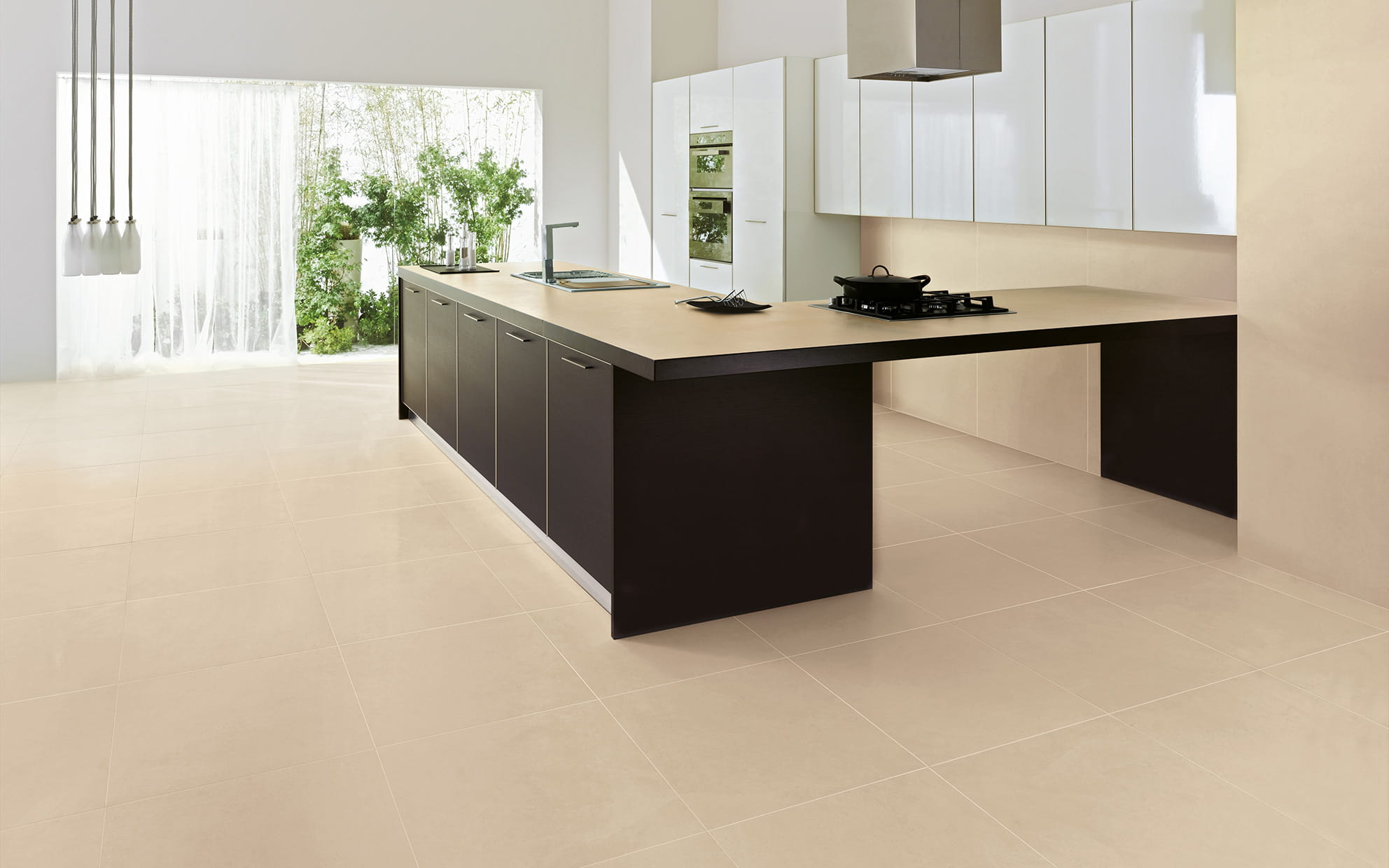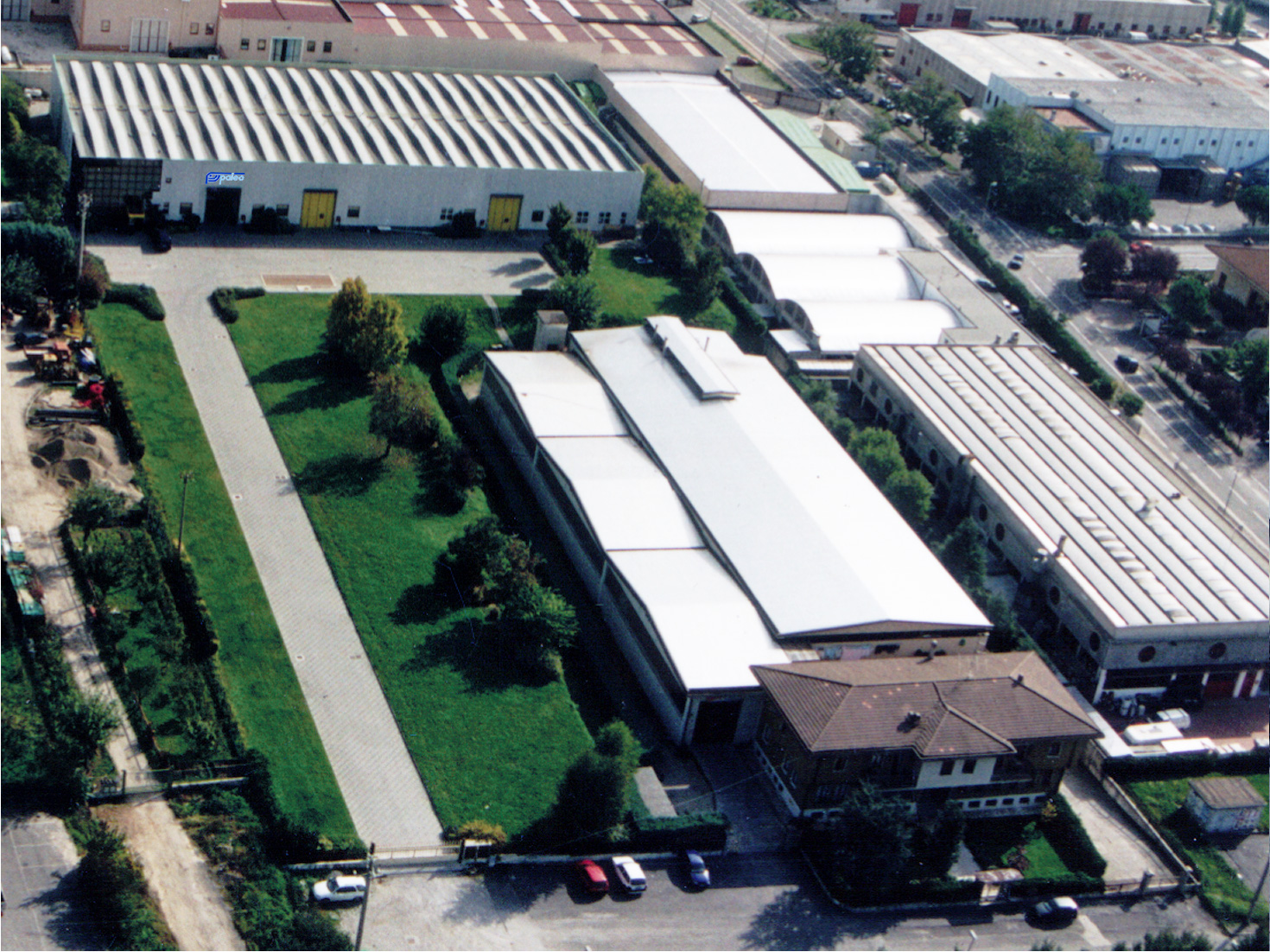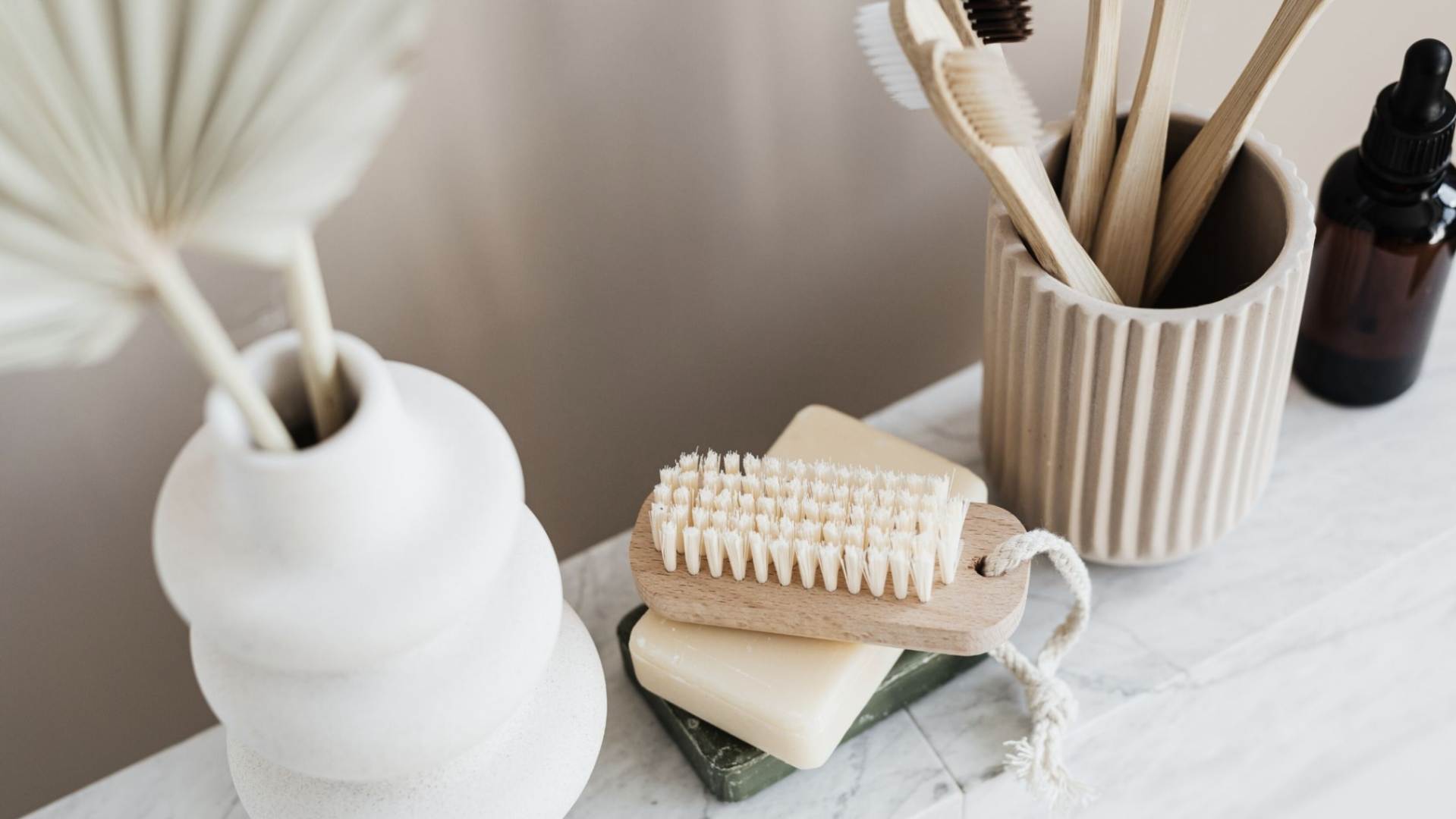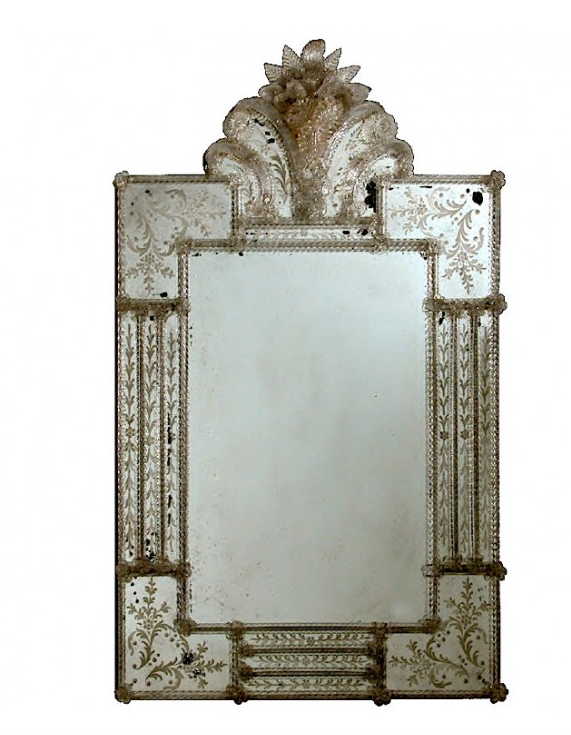Explore Most Beautiful Species of Prayer Plants for Home
Prayer plants are exquisite plants that enhance the indoor vibrancy of the house. Their unique and intricate leaf design easily catches everybody’s attention. The extraordinary foliage of this plant adds a touch of natural beauty to the house. The best part about having a prayer plant is you will find a wide array of patterns […] The post Explore Most Beautiful Species of Prayer Plants for Home appeared first on Architectures Ideas.

Prayer plants are exquisite plants that enhance the indoor vibrancy of the house. Their unique and intricate leaf design easily catches everybody’s attention. The extraordinary foliage of this plant adds a touch of natural beauty to the house.
The best part about having a prayer plant is you will find a wide array of patterns and species for enthusiasts to choose from. But trust us, all of these options are worth it. Before we dig into different species of prayer plants, let us first understand what a prayer plant is.
What is a Prayer Plant?
In simpler terms, the prayer plant is a low-growing tropical plant species native to South America. The prayer plant has a fascinating behavior; the spreading leaves of the prayer plant turn upwards in the evening, just like we fold our hands for prayer in evening vespers. This daily movement of leaves is scientifically referred to as nyctinasty. The leaf’s movement changes as the water pressure in the pulvini and swollen nodes changes.
The plant remains evergreen throughout the year and spreads vegetatively with rhizomes. It is a unique, distinguishable, and ever-growing plant that can beautify any home.
The roots of its origin extend back to the 16th century; Bartolomeo Maranta, an Italian physician and botanist from the 16th century, headed the research for this variety. And the prayer plant is named after it, Maranta leuconeura. The prayer plant is famous for its tricolor, with deep greens, velvety leaves, and yellow splotches that spread through the midrib and are complemented by arching red veins over the margins.
You might be curious: Why is such a captivating plant categorized as an indoor plant? The primary reason is that the plant grows slowly and can reach a modest height of a few feet. This adds a touch of serenity without overpowering the surroundings. The botanical gem requires minimum care (which we will discuss later in the blog) and can be kept indoors all year round.
In the next segment, we will discuss the variety of prayer plant specimens available. Each variety has a unique charm, and we bet you will instantly fall in love with each one mentioned here.
The best prayer plant species to grow at home.
1. Ctenanthe:
Ctenanthe, pronounced as “te-Nanth-ee,” has its origin in the lush landscapes of Brazil. However, these plants also grow in Costa Rica, Panama, Colombia, Venezuela, Peru, Bolivia and Ecuador. These plants are highly adaptable to diverse climates, including your home.
A few Ctenanthe species include,
Burle Marxii:
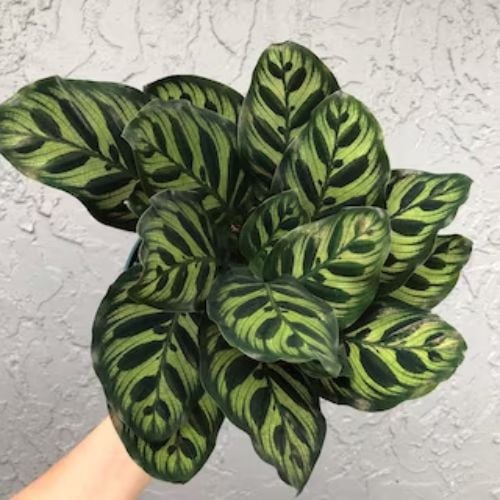
Again, this prayer plant is named in homage to the renowned Brazilian architect Roberto Burle Marx. This particular prayer plant has bright green leaves with a striking dark fishbone pattern, which gives it the name “fishbone prayer plant.”
Burle Marxii was categorized under Maranta and is sometimes referred to as Maranta amabilis. The height of the prayer plant is 12 inches and has a generous spread of 18-24 inches. The Burle Marxii prayer plant occasionally surprises with dainty white flowers.
Lubbersiana:

Ctenanthe Lubbersiana is a marvel characterized by a marbled yellow and cream color variegation on medium green oblong and rounded leaves. The maximum height of the plant is 2 to 4 ft and spreads impressively over 2 to 4 ft.
Again, this plant natively belongs to Brazil and was previously known as Stromanthe Lubbersiana. Lubbersiana was also known as “never never plant.”It grows mesmerizing flowers that are tiny and white in color.
Setosa:

The botanical name of this splendid prayer plant is Ctenanthe Setosa. Grey star, aka Setosa plant, has distinctive elliptical leaves with a pale silver tint, intricate dark veins, and red-purple undersides. It can grow 3 to 5 feet tall and often has small white flowers on them.
As you can see, this plant’s height is larger than that of its counterparts; however, it looks magnificent when kept indoors. If you are seeking a commanding presence with indoor plants, Setosa is the best option to go for.
2. Geoppertia: A botanical evolution:
This plant species is recategorized to the Geoppertia genus from the previous classification to the Calathea genus. The reason is the DNA analysis conducted in 2012 revealed that the plant genetically differed from the Calatheas category. The substantial differences found during the examination led to the recategorization of the plant.
This species of prayer plant originated in Mexico, Central America, the Caribbean, and South America. The presence of plants in various landscapes showcases the rich biodiversity and adaptability of prayer plants.
Let us gander at the various Geoppertia species :
Concinna:
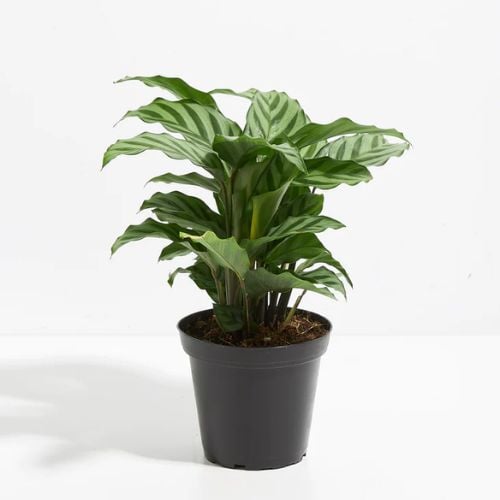
You will often find prayer-plants with eccentric herringbone patterns on them. Among the many prayer plants, “Freddie” is a cultivated variety of the Geoppertia Concinna category. It has an ovate shape with pointed leaves, a pale color, and a silver-green lining. The Concinna prayer plant can reach an impressive size, growing up to 20 inches tall and wide.
Crocata:

This is quite an interesting prayer plant on the list, with large dark green leaves and purple undersides. Crocata stands out with its unique foliage with a wavy texture. Unlike the above species, this plant grows orange-gold flowers, giving a burst of warm hues. The name Crocata means “Saffron colored”; however, the other common moniker of this plant is “eternal flame plant.”
Crocata grows 18 inches tall and spreads up to 12 inches. This plant will add a nice warm glow to any house. Carewise, the plant nurtures best in slightly acidic and slightly alkaline soil.
Fasciata:

Geoppertia Fasciata has large, rounded leaves and dark green stripes and midribs. The visual delight continues on the underside, which is dark red to purple. Again, this species belongs to northeast Brazil and is classified as Calathea fasciata. The botanical gem grows flowers when kept outdoors. The prayer plant size is four feet high and spreads around one to two feet.
Insignis:
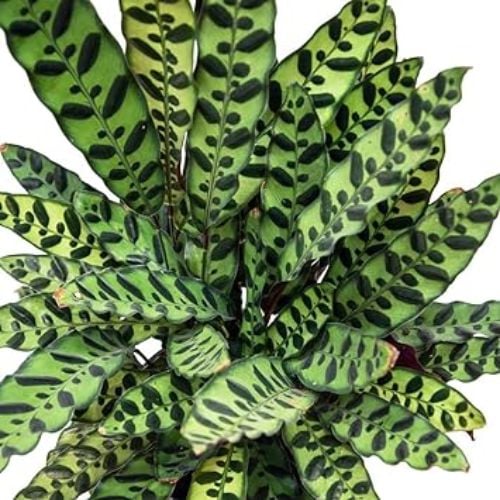
It looks like most of the prayer plants originated in Brazil. Insignis are long, narrow, and pointed leaves that resemble a rattlesnake and are hence referred to as rattlesnake calathea. The botanical name of the Insignis plant is G. lancifolia, Calathea lancifolia, and C. Insignis.
This prayer plant has extremely wavy leaves with light green to yellowish green foliage, forming an interesting pattern. The entire leaf is surrounded by small and large green blotches, which make the plant look more attractive. What’s more exciting is the underside color, it is purple or maroon.
If you have a larger indoor corner space, you should consider bringing this fountain-like prayer plant home. It has the potential to cover the entire area.
Kegeljanii:
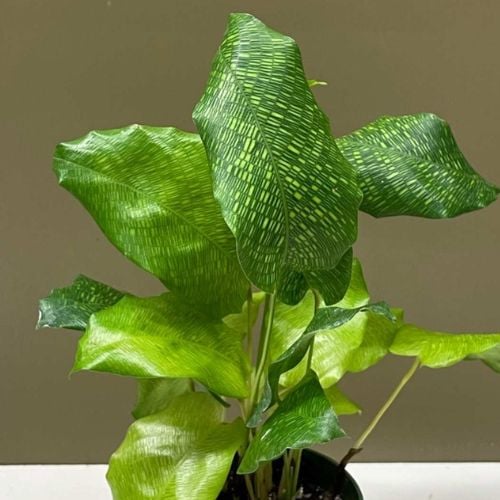
The prayer plant has a fine and intricate yellow mosaic style that adds a touch of elegance. Again, this prayer plant originated from the vibrant landscapes of Brazil; this species of prayer plant is known by a variety of names, such as C.bella, C.musaica, and C.cardiophylla under the Calathea category. When classified as Maranta, it is referred to as M.kegeljanni, M.tessellate var. Kegeljanni and M.bella.
However, a simple Google search will reveal this plant’s reference as “Network calathea.” The prayer plant leaves are oval and pointed with wavy margins, giving it a bushier shape.
Elliptica:

Elliptica is a very familiar prayer plant with long, pointed, oval-shaped leaves that have a medium green color and white stripes. The undersides of these leaves add to the charm, displaying a light green color.
Botanically, this plant is known as Calathea elliptica or C.vittata, and it belongs to the northern regions of South America. This prayer plant is known for its manageable size, growing up to 12 inches and spreading up to six to eight inches. The flowers of this power plant are cream-colored, throwing a delightful contrast. This is a very interesting indoor plant to have in your home.
3. Maranta:
Maranta are low-growing spreading prayer plants that thrive under moist, warm, and gentle airflow conditions. The pronunciation of Maranta prayer plants is “ma-RAN-tah,” and they originated in Central and tropical South America. The beauty of Maranta lies in the lush foliage and quick growth. Often, Maranta leaves branch out horizontally and spread extensively under favorable conditions. Maranta prayer plant patterns vary depending on the species you decide to bring home. A few of which we will explore here.
Surprisingly, there are nearly 50 varieties of Maranta, but two of them are highly popular;
- Maranta leuconeura;
- Maranta arundinacea;
Let us learn more about them.
Maranta Leuconeura:
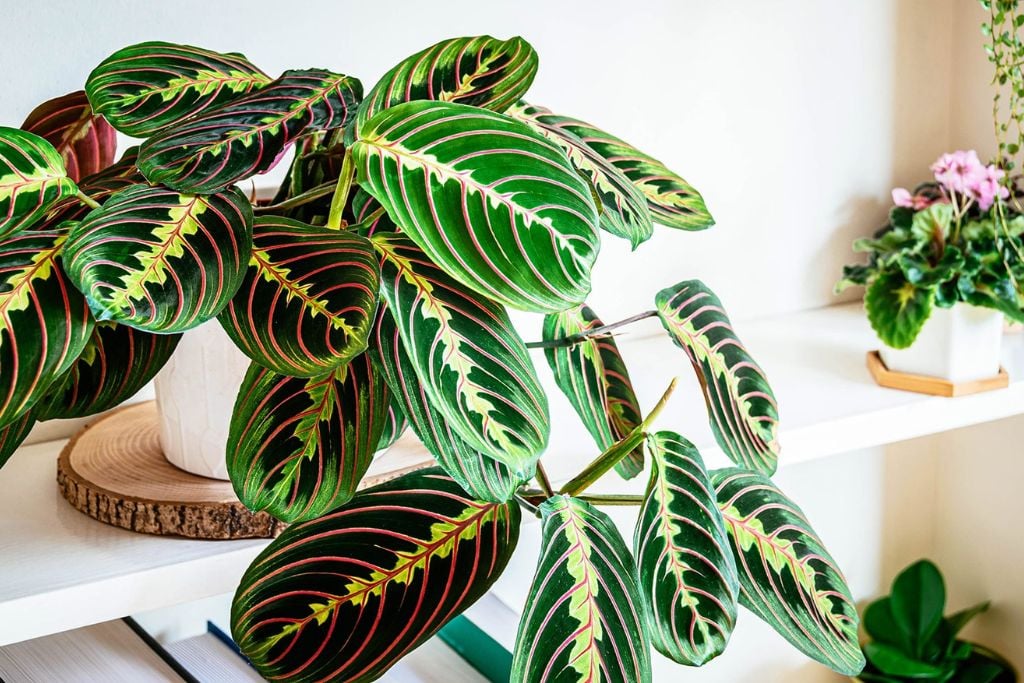
Often referred to as “Lemon Lime,” this species of prayer plant is related to a red-veined prayer plant. The plant foliage is green in color and has a very bold pattern adorning the indoor spaces. The midribs consist of medium and dark green colors with bright lime veins. However, flip the leaves, and you will see the undersides that are light green in color.
This prayer plant grows between 12 to 15 inches in height and spreads accordingly. Interestingly, Leuconeura produces purple flowers in the summer months, giving a visual appeal.
The “Fascinator,” also known as the “black prayer plant,” represents another style of the leuconeura prayer plant. Fascinator has dark green to black leaves and a pale midrib blaze. The reddish-purple veins of this plant give it a distinctive appearance and a new perspective on the Leuconeura style. The fascinator plant spreads across 15 inches wide and tall in the room.
Maranta Arundinacea:
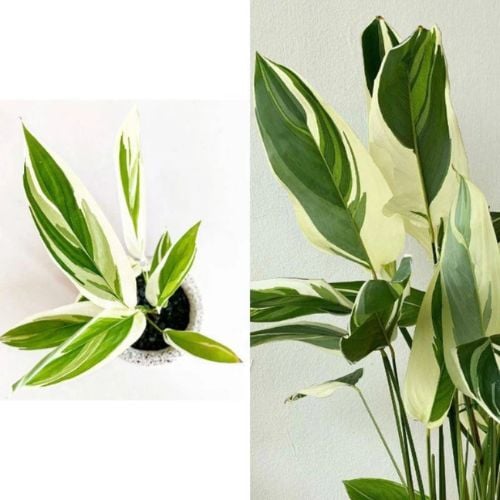
Also known as Vairegata Arrowroot is new and a well-known species of the Maranta family. The leaves are distinguished by their oval shape with green and white stripes on it. However, the light green and cream-colored blotches may differ from leaf to leaf. This plant flourishes up to 6 feet tall when planted in a large pot with enough space.
Not only does the Maranta Arrowroot plant add to the aesthetics, but the roots are equally useful. The roots are edible and can be used to make starch or flour.
Stromanthe:
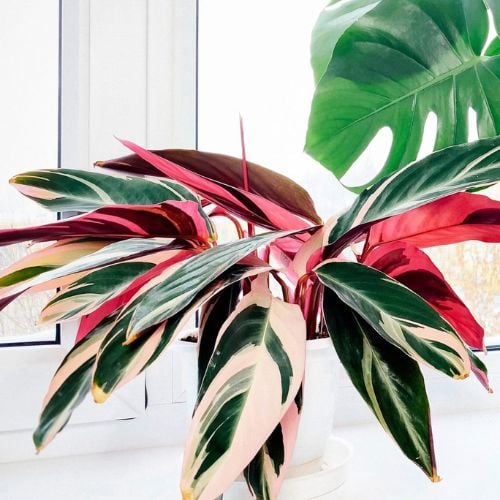
Stromanthe plants thrive in the lush green regions of Mexico, The Caribbean, Central America, and South America. It has a diverse array of species found across multiple regions. One particular species that stands out is Thalia.
Thalia:
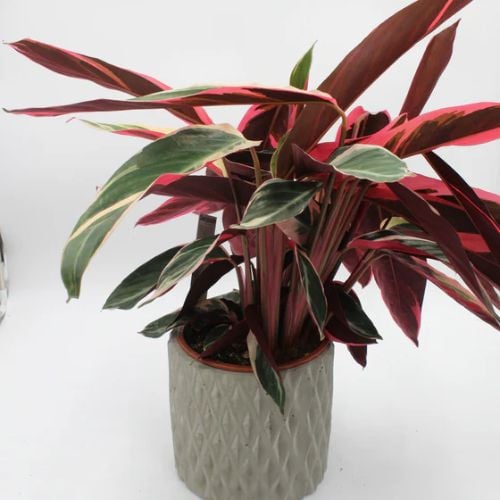
Thalia has long, lance-shaped, pointed leaves with dark green and pale midribs with purple-reddish undersides. You will find Thalia often denoted as S. sanguinea. The elegant prayer plant grows up to five feet tall and spreads across three ft.; quite huge, but it stands sturdy. Thalia flowers are red and white inflorescence.
Another variety of Thalia is “Triostar,” whose leaves are a colorful mix of white, pink, and green variegation, showcasing nature’s penchant for creating wondrous plants. It has reddish pink undersides, which adds to the beauty of this wonderful plant.
How Do You Care for a Prayer Plant?
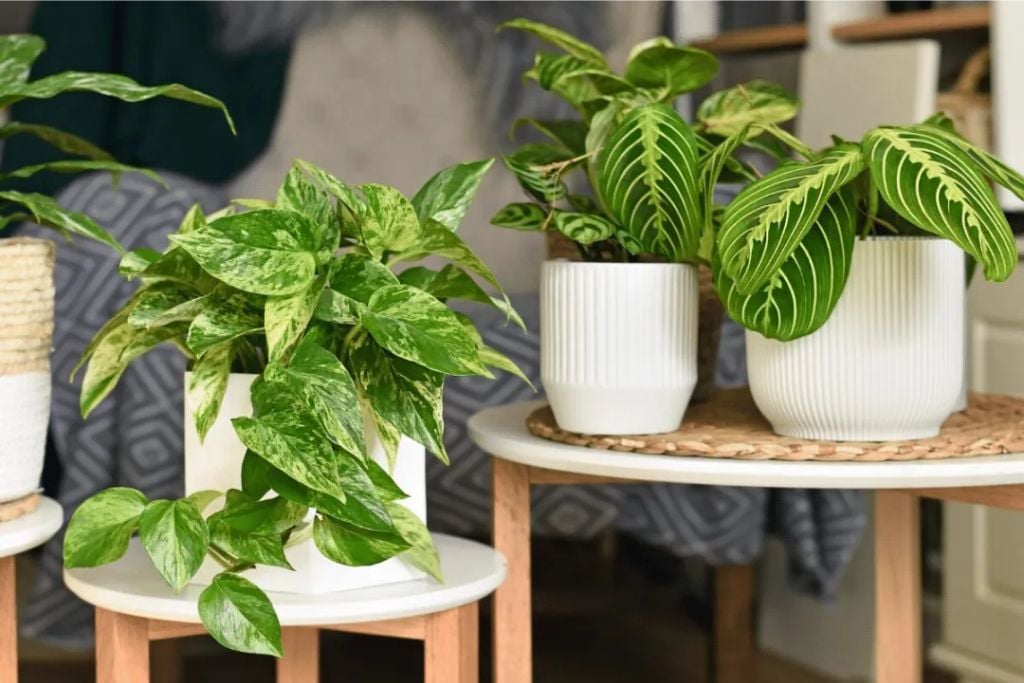
Prayer plant care requires dedicating your minimum time but maximum love. To ensure that your prayer plant flourishes exceptionally well, let us look at the plant care requirements you need to do to grow a healthy plant.
Light and Temperature:
Prayer plants prefer gentle light and indirect sunlight. Hence, do not put the plant in direct sunlight; otherwise, it will develop blotches and patches that will destroy the beauty of the plant. If you live in an area with minimum sunshine during winter, make sure that you put them in bright, indirect light for whatever time the sunlight is available. Otherwise, the plant might die. Fostering the right environment of light is of paramount importance to ensure longevity.
Soil:
The best thing about prayer plant care is that they can grow in any variety of soils. You can use any traditional potting mix or make your own mixture of two parts of sphagnum peat moss, one part of loamy soil, and one part of perlite or coarse sand together. For optimal results, it is best to use slightly acidic soil with a pH of 6.0.
Water:
Prayer plants need frequent watering, especially when they dry out. It is a crucial aspect to ensure the well-being of your wonderfully green prayer plant. Hence, make sure that you never let the soil dry, or else the plant won’t be able to survive long. However, over-watering the plant or letting the water sit excessively over leaves or soil may cause fungal problems. Therefore, ensure that you water the plant as needed and use room-temperature water.
Temperature and Humidity:
Prayer plants grow best at a temperature ranging between 60 and 80 degrees Fahrenheit. As mentioned above, during winters, the absence of sunlight might damage the plant or result in unfortunate plant death. Prayer plants grow better in a humid atmosphere; it is advisable to use a humidifier for best-growing results. The right fostering maintains the vibrancy of the foliage.
Fertilizers:
To promote rapid growth, prayer plant care requires you to use fertilizer every two weeks during the spring and fall seasons. Too little fertilizer will make the plant grow slowly or hardly at all. On the other hand, too much fertilizer will burn the plant’s roots, and gradually, the plant will start dying. The regular feeding of nutrients contributes to the evergreen appearance of the prayer plant.
How to Propagate Prayer Plants?

The recommended method for expanding the collection of prayer plants is to propagate through division during repotting. Here are a few tips for propagating prayer plants.
- Divide the entire prayer plant into several smaller plants by gently shaking the soil and separating the root clusters.
- Each smaller plant should have a good amount of stems and roots to facilitate optimal photosynthesis.
- Place these smaller plants into shallow pots.
- Keep these new pots in a warm and humid atmosphere during the initial days, away from the direct sunlight.
Common Prayer Plant Problems
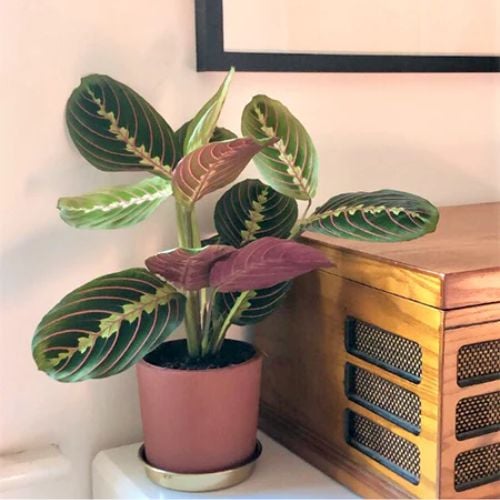
Brown Leaf Edges:
- Causes: Underwatering, low humidity, excess fertilizer, mineral build-up.
- Solutions: Adjust watering schedule, increase humidity, fertilize sparingly, flush the soil.
Drooping Leaves:
- Causes: Overwatering, underwatering, insufficient light, temperature stress.
- Solutions: Check soil moisture and adjust watering, ensure proper light, maintain stable temperatures.
Yellowing Leaves:
- Causes: Nutrient deficiency, overwatering, pests and diseases, excessive sunlight.
- Solutions: Fertilize appropriately, adjust watering, control pests and diseases, provide adequate light.
FAQs:
Yes, indeed. Prayer plants enhance the beauty of the house when placed indoors.
In some cultures, people believe that prayer plants bring good luck and positivity.
The purpose of having a prayer plant indoors is to bring good luck, enhance emotional support, and bring growth and prosperity into the house.
Conclusion
Voila! Over the coming few weeks, you will have a new prayer plant baby in the house. We hope that our blog helps you expand your knowledge of prayer plant species. Whether you are a prayer plant lover or an enthusiast, we hope that our guidance will assist you in selecting one for your home. May you enjoy the vibrancy of the prayer plant once you are in the house. Thank you!
In Case You Missed It!
- Tips on How to Grow the Perfect Vertical Garden
- Revamp Your Boring Terrace With These Magnificent Roof Garden Ideas
- Calathea Peacock Plants: Complete Indoor Plant Care & Growing Guide
The post Explore Most Beautiful Species of Prayer Plants for Home appeared first on Architectures Ideas.


